Historic Flooding in Yellowstone National Park Causes Massive Damage, Repairs Might Take Years
This news story about the consequences of the historic flooding in Yellowstone National Park is based on a June 14, 2022, National Park Service press release. You can read the original release here.
Repairing the enormous damage caused by this week’s historic flooding in northern Yellowstone National Park will “require substantial time and effort,” the National Park Service said.
It is very likely that the park’s northern portion will not reopen completely for years. In any case, the northern half of the park will probably remain closed for the remainder of this year.
This means that visitors most likely will not be able to visit the iconic Lamar Valley, home to massive herds of elk and bison, wolf packs and bears. Whether it will be possible at all for visitors to reach Mammoth Hot Springs (from the south) remains to be seen.
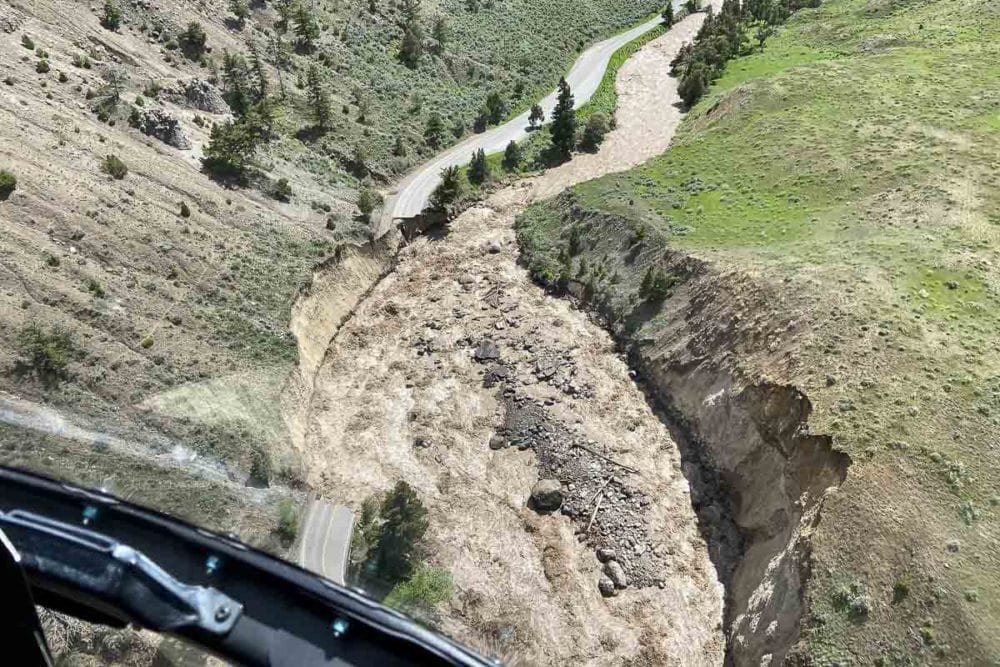
Historic Flooding in Yellowstone National Park Causes Massive Damage, Repairs Might Take Years
The National Park Service said that “aerial assessments conducted on Monday, June 13, by Yellowstone National Park show major damage to multiple sections of road” in the park’s northern portion.
This includes the North Entrance Road between Mammoth and Gardiner, Montana, and the Northeast Entrance Road between the Lamar Valley and Cooke City, Montana. Several sections of those roads are either severely damaged or completely gone.
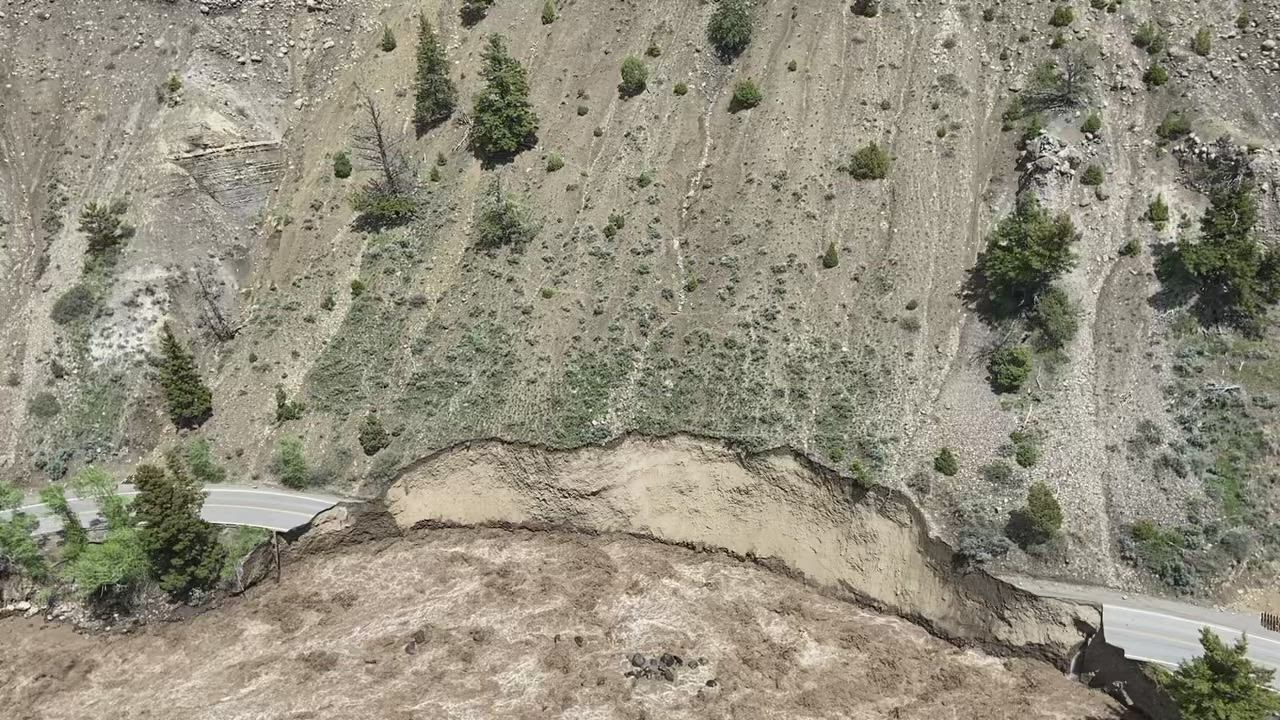
And even roads that are still there may be compromised, unstable and unsafe to support vehicle traffic.
Assessments, repairs and reconstruction of those roads will take a significant amount of time—certainly months to possibly years.
“The National Park Service will make every effort to repair these roads as soon as possible; however, it is probable that road sections in northern Yellowstone will not reopen this season due to the time required for repairs,” the Park Service said.
On Tuesday, June 14, Yellowstone National Park Superintendent Cam Sholly confirmed this, according to National Parks Traveler. Sholly stated that the park’s northern half would remain closed for the rest of the summer.
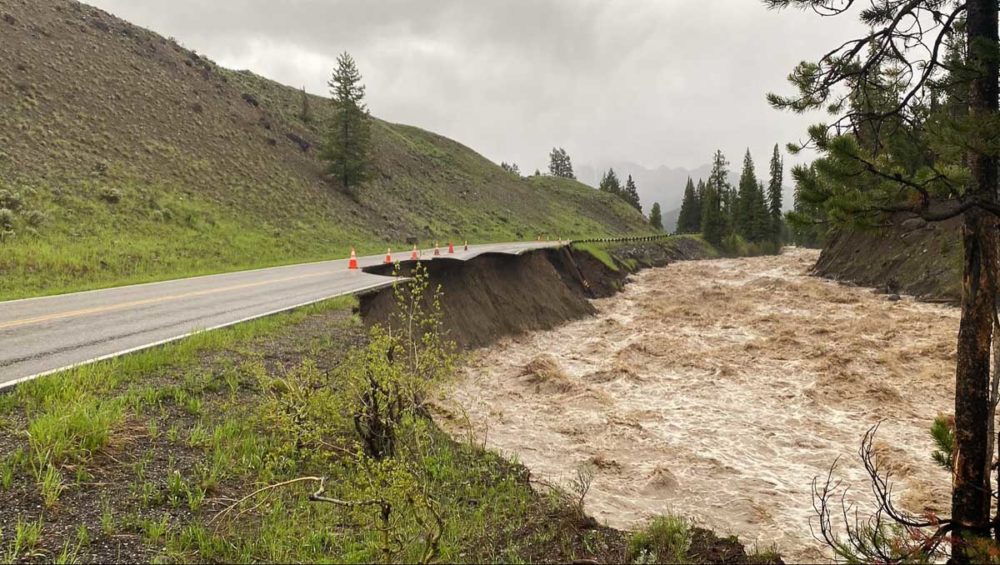
Unprecedented Rainfall On Top of Melting Snow
The Absaroka and Beartooth mountains in and around Yellowstone National Park received 1-5 inches of rain from June 10 to 13. This was on top of 2-5 inches of snowmelt water.
Combined, this caused “flooding rarely or never seen before across many area rivers and streams,” the National Weather Service said.

The sheer amounts of rainfall were truly historic, a devastating weather event that may have been a “once-in-a-thousand-year event,” Sholly said. “Whatever that means these days. They seem to be happening more and more frequently.”
Although the flooding subsided slightly on Tuesday, the weather forecast didn’t look promising for the rest of the week.
There’s still about a foot of snow in the park’s higher elevations, Superintendent Sholly said. More rain may be on its way, which could cause another flooding event in Yellowstone National Park before the end of the week.
All entrances to Yellowstone National Park remain closed for at least the rest of the week. All visitors in the park have been evacuated. The last people to be taken out of the park were five groups of campers in the Northern Range backcountry.
Almost incredibly, it appears that the unprecedented Yellowstone flooding has not caused any human injuries or deaths.
When the water levels have dropped and floods receded, the park will announce reopening times. Before that can happen, though, extensive evaluations must be done on bridges, roads and infrastructure like wastewater treatment facilities.
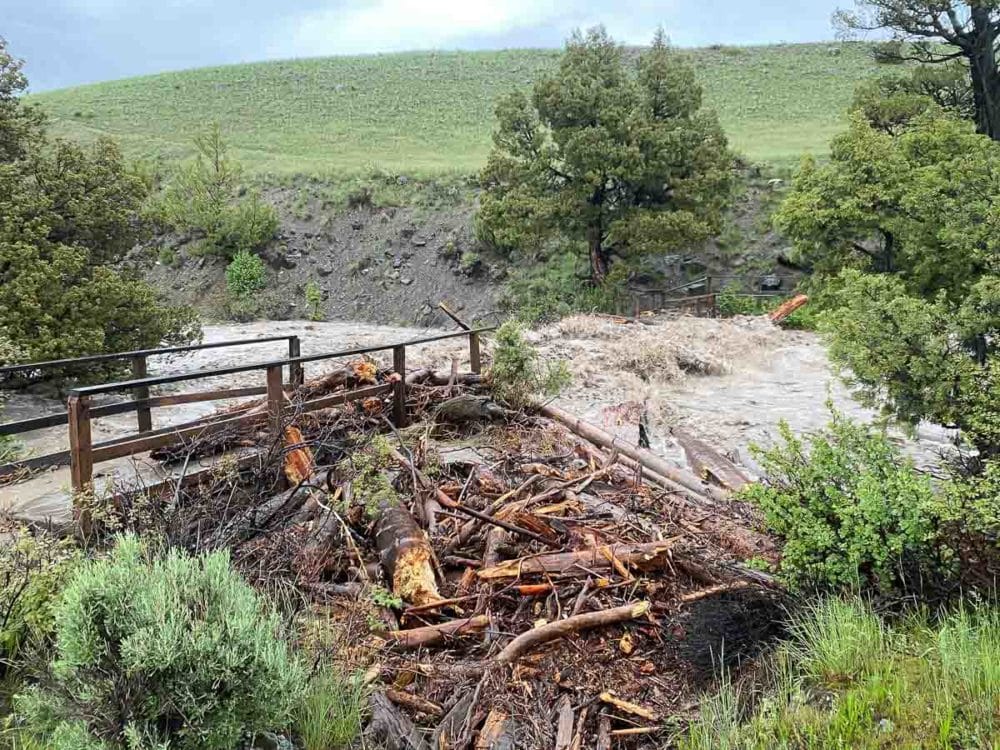
Water levels are still extremely high and Sholly said they are “not putting teams in harm’s way at this point.”
He added that park management will gather a large group of people from agencies throughout the country to help assess the damage in Yellowstone National Park, once the water levels drop. This is expected to happen early next week.
While the northern part of the park is severely damaged—although the flooding is not expected to have seriously affected wildlife—the Southern Loop appears to be less impacted.
Crews will assess the damage on the Southern Loop and determine when those roads are safe to reopen.
Known Damage In and Around Yellowstone National Park
The National Park Service specified a number of roads with significant (known) damage from the historic flooding in Yellowstone.
- North Entrance (Gardiner, Montana) to Mammoth Hot Springs: road washed out in multiple places, significant rockslide at Gardner Canyon
- Tower Junction to Northeast Entrance: segment of road washed out near Soda Butte Picnic Area, mudslides, downed trees
- Tower-Roosevelt to Canyon Junction (Dunraven Pass): mudslide on road
- Canyon Junction to Fishing Bridge: Segment of road just south of Canyon Junction potentially compromised and closed for evaluation
Additionally, multiple locations across Yellowstone are without power.
Wastewater systems at both Mammoth Hot Springs and Canyon Village were also impacted by the flooding and being actively monitored.
In Red Lodge, Montana, to the park’s northeast, a stream crested its banks and flooded the town center.
In the gateway town of Gardiner, Montana, a building housing National Park Service employees fell into the raging Yellowstone River and got swept away. It reportedly floated five miles before it finally sank.
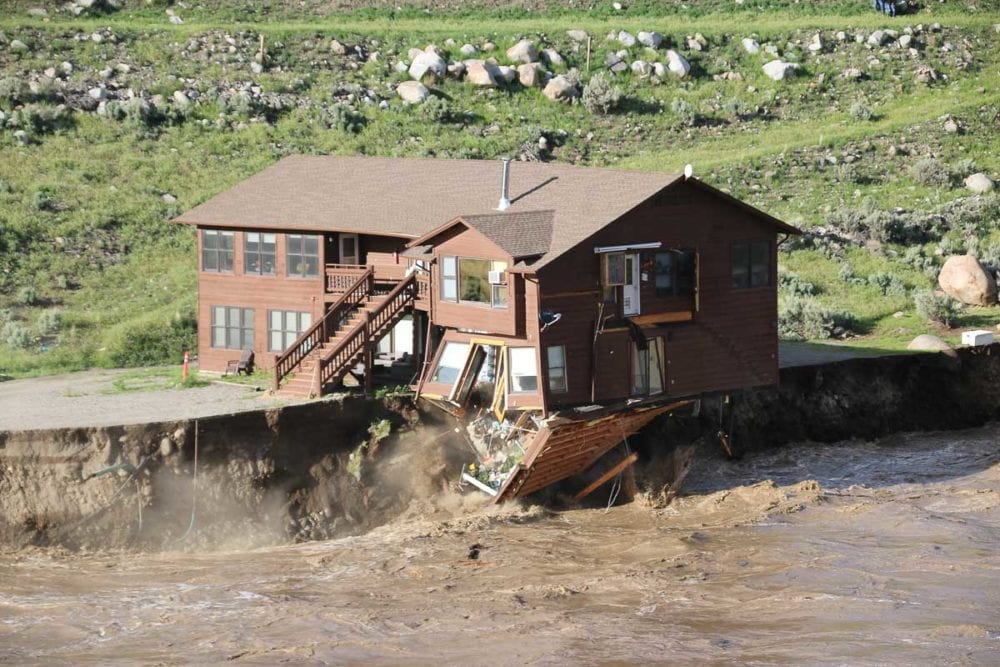
More Problems to Come
Besides the massive costs involved to repair these major roads in the north of Yellowstone, another problem the park now faces this summer is visitor concentration.
While it looks likely that the Southern Loop will reopen to visitors at some point in the near future, this creates an entirely new issue.
Sholly said that during Yellowstone National Park’s peak summer season, which typically runs from June through August, the park can receive a million visitors per month.
Considering that the Northern Loop will remain closed for the foreseeable future, this would, in effect, mean that all those visitors would be concentrated in just the Southern Loop.
It is impossible for half of the park to support all the visitation, Sholly said.
To tackle this predictable problem, the park is considering the “implementation of some type of temporary reservation system to prevent gridlock and reduce impacts on park infrastructure.”
This temporary reservation system could resemble those already in place in parks like Glacier, Rocky Mountain and Arches.
Additionally, the prolonged closure of Yellowstone National Park’s northern portion will greatly affect local businesses in gateway towns like Gardiner and Cooke City, which thrive on tourist dollars.
From restaurants and accommodations to tour operators and Yellowstone wildlife guides, businesses that rely on access to Yellowstone National Park will most certainly take a big hit this summer.
This catastrophe occurred in the very year Yellowstone National Park is celebrating its 150th anniversary. In the timespan of just a few days, what was supposed to be a year of festivities, events and celebrations, has become a once-in-a-lifetime disaster.
Images of the Historic Yellowstone National Park Flooding Event
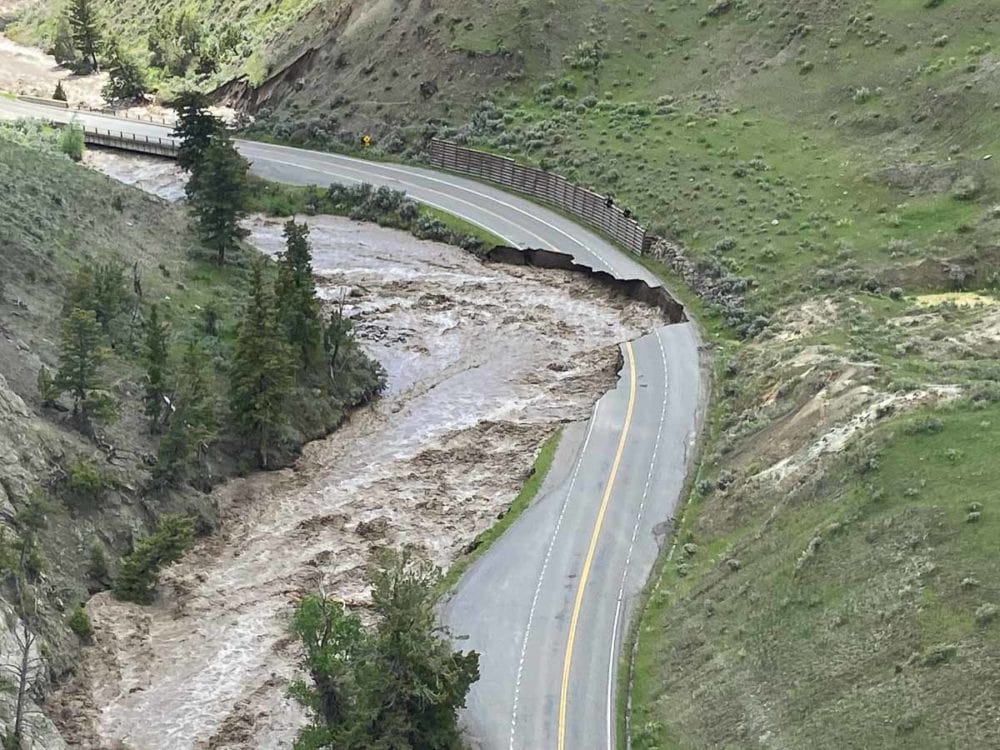
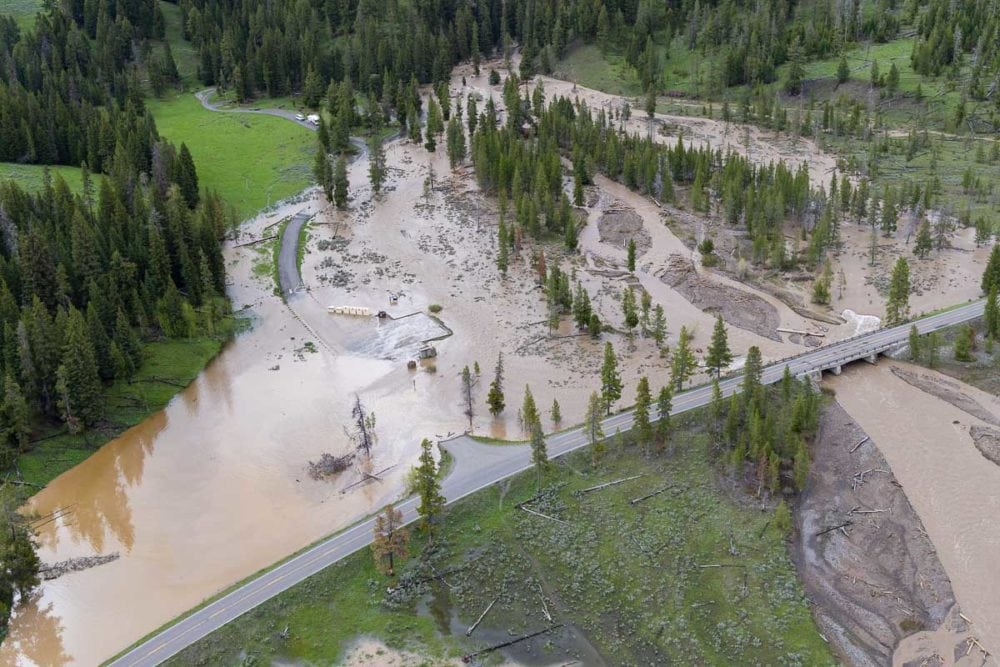
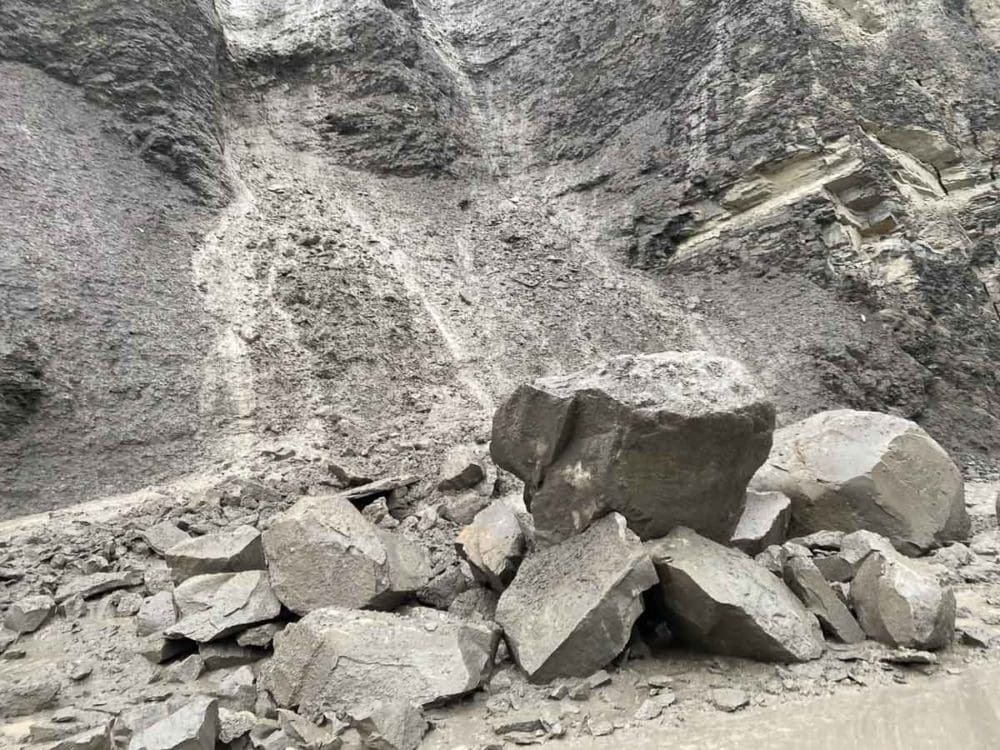
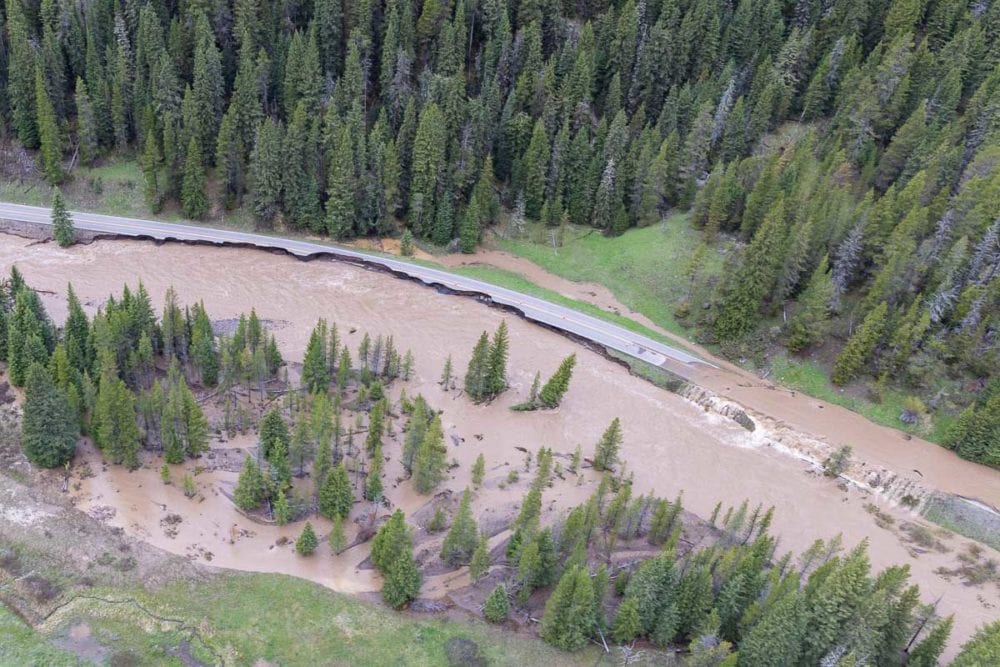
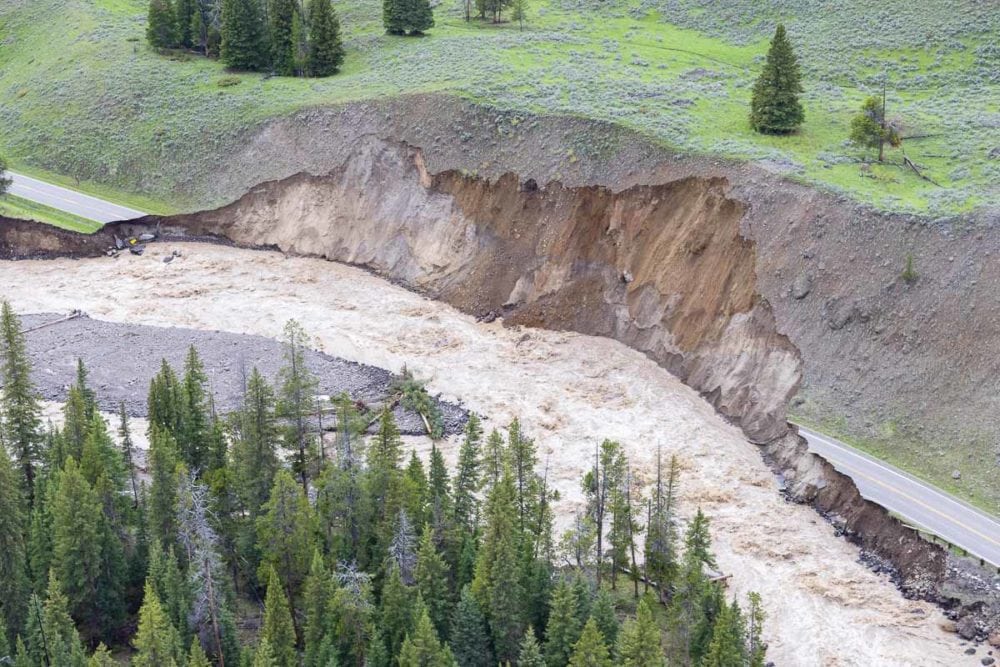
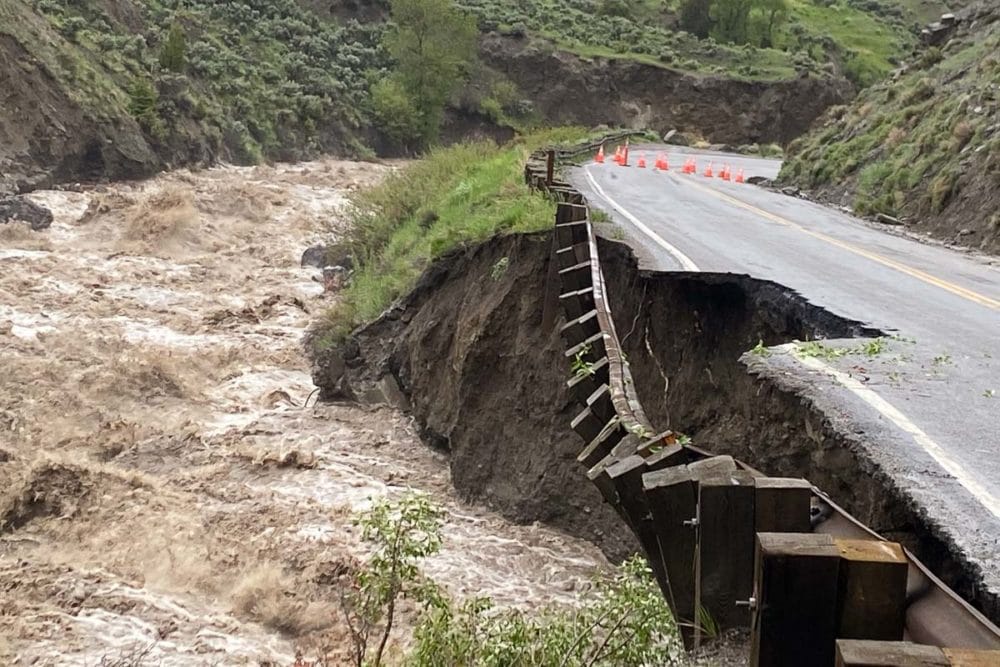
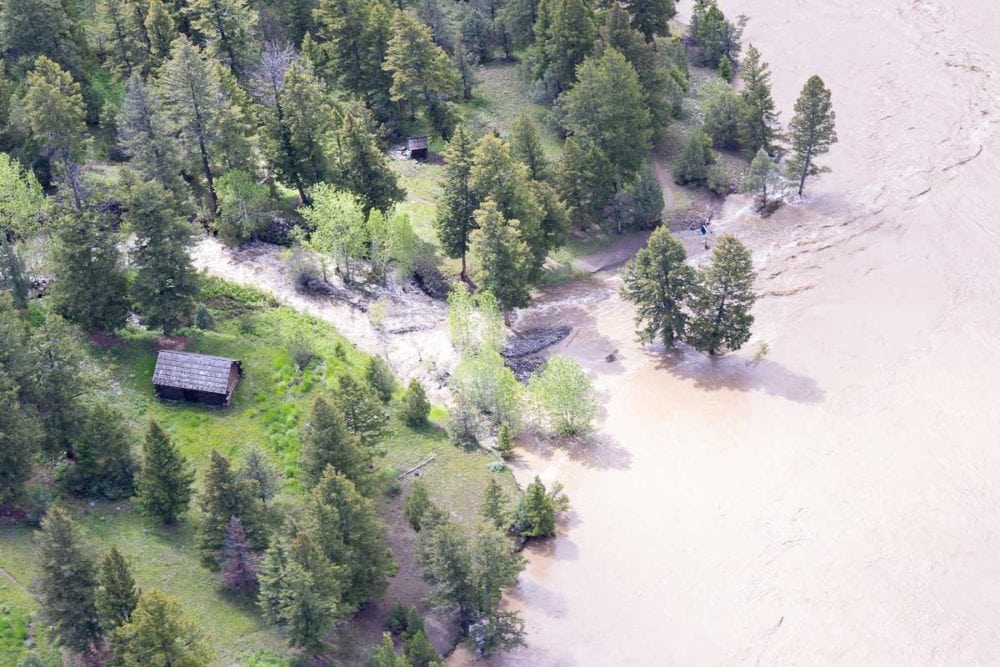
More Information About the Historic Flooding in Yellowstone National Park
People planning to visit Yellowstone National Park in the upcoming weeks or months are told to stay informed about the park’s current conditions, road status and weather.
You can find more information and updates on the Yellowstone National Park website: Park Roads.
Additionally, you can also get Yellowstone road alerts on your phone: text “82190” to 888-777 (an automatic text reply will confirm receipt and provide instructions).
Anyone who’s willing and able can donate to the Yellowstone Resiliency Fund, which has been reopened by Yellowstone Forever. Donations will “provide immediate and flexible financial support for the most pressing needs in our park community.”







